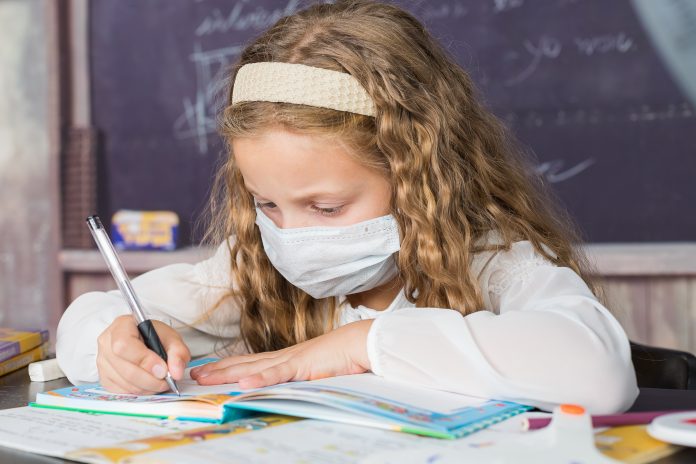COVID-19 case numbers need to be far lower than current rates before lifting mask mandates in US elementary schools according to new research
Researchers from the Harvard T.H. Chan School of Public Health, the public health school of Harvard University in Boston Massachusetts, have released findings that indicate it is far too soon to be lifting mask mandates in primary schools.
Reducing infection rates is still a crucial step
“It is critical that communities have a conversation about their goals for in-school mitigation measures,” said Andrea Ciaranello, MD, investigator in the department of Infectious Diseases at MGH and senior author of the paper.
“Do they want to prevent all in-school transmissions? Or do they want to keep the number of cases among students, staff, and families low enough that no one is likely to be hospitalized? Or do they want to minimize absences due to isolation and quarantine so students could take advantage of in-person learning, a goal which also requires keeping overall cases low? These are all valid goals, and once they are clearly articulated, we can use a systematic, mathematical approach to estimate the level of mitigation needed to meet them.”
According to the National Centre for Education Statistics there are around 37 million students in elementary education in the US however there is still little guidance provided to help schools know when the right times are to lift or reinstate masks in public areas.
The Harvard researchers used model-based simulations to quantify how changes in mitigation measure such as wearing masks might impact the transmission of COVID-19 in students, staff and their families.
The results indicated that in order to meet the goals school policymakers wanted to achieve, local case rates need to be far below those seen during the current wave of the pandemic, before removing masks would be wise.
The relationship between vaccination and the mask mandate
When looking at a primary school where 25% of students and 70% of teachers are vaccinated, the study was able to show that decision makers should only be removing masks when the local COVID-19 case rate is below 14 cases per 100,000 per day.
However the team pointed out that if vaccination coverage increased to 90% among both students and teachers, decision-makers could remove masks when the local case rate was higher than 50 cases per 100,000 per day and still achieve the same goal.
Ways to move the timeline along
Through their research study authors also found that several factors could change these advised brackets. In general, they advised that increasing vaccination rates in students, teachers, and staff, or instituting weekly screening would allow schools to remove masks even sooner and when there are higher rates of community transmission without increasing the danger.
“This study emphasises that it is important for schools to set clear objectives for what they want to achieve from their policies around masks and other mitigation measures,” said Giardina, a PhD candidate in health policy in the Center for Health Decision Science at Harvard Chan School.
“Having data-driven metrics about when we want to take off masks or add them back on can help clarify the decision-making process, and make sure policy decisions both align with the goals of a community and are responsive to the ever-shifting dynamics of this pandemic.”
Although the study focused on the Delta variant, lead author John Giardina noted that the decision framework will still be useful to school decision-makers dealing with other variants.











